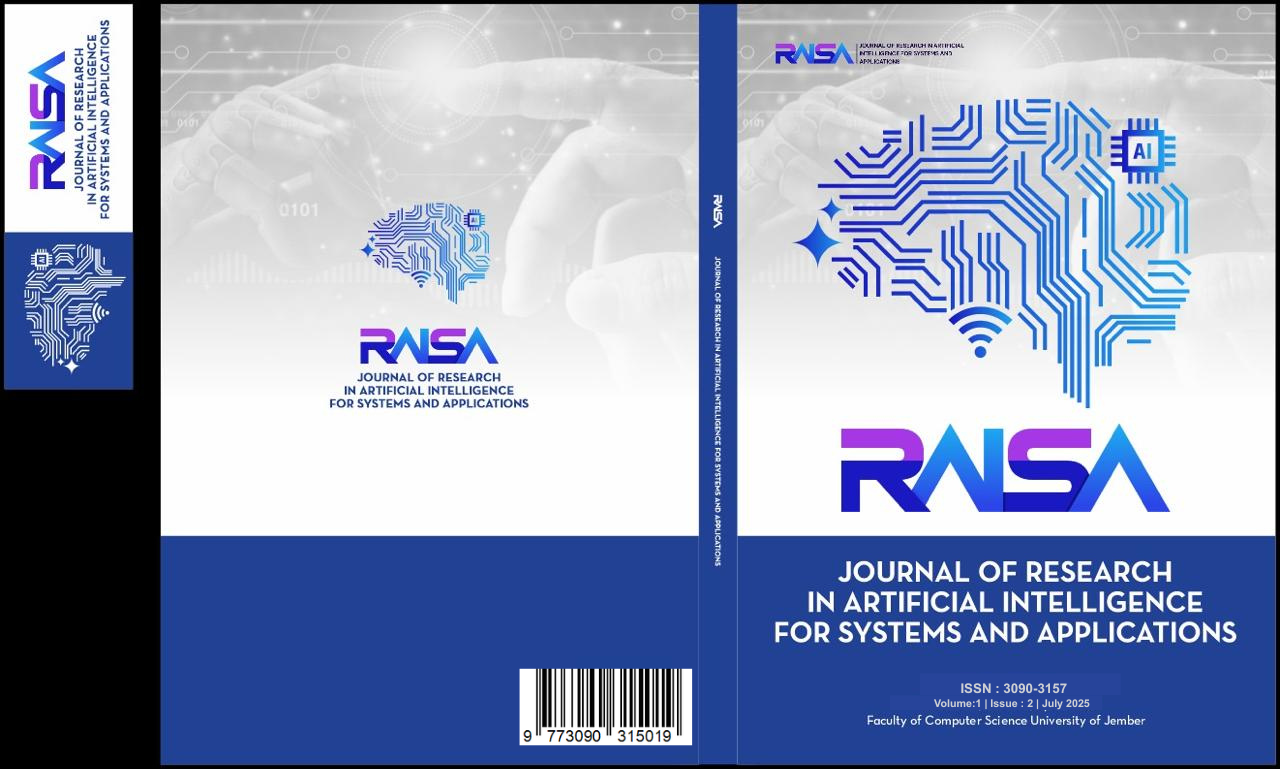Disease Classification in Cauliflower Plants Using Vgg19 Architecture and Support Vector Machine (SVM) + Lime
DOI:
https://doi.org/10.19184/raisa.v1i2.6262Keywords:
Cauliflower, VGG19, SVM, LIME, Disease classificationAbstract
Cauliflower (Brassica oleracea L. botrytis) is a cool-season vegetable rich in fiber, vitamin B, and phytonutrients that provide significant health benefits including cardiovascular protection and cancer risk reduction. Manual monitoring of plant diseases is extremely difficult and time-consuming, making early disease detection crucial for efficient cauliflower cultivation in the agricultural sector. This study aims to classify diseases in cauliflower plants using VGG19 architecture combined with Support Vector Machine (SVM) and Local Interpretable Model-Agnostic Explanations (LIME). The dataset consists of 7,360 digital images covering three disease types (downy mildew, black rot, bacterial spot rot) and healthy plants. Results show that the VGG19+SVM model achieved 99.86% accuracy, outperforming standalone VGG19 (99.46%). LIME analysis successfully visualized critical areas underlying the model's predictions. These findings demonstrate the effectiveness of combining deep learning and machine learning for plant disease detection, while enhancing model interpretability through visual explanations.






